(PCC) Program on Chinese Cities – Thoughts on Overseas Travels Series
Authors: Xia Jiang, PhD,
Associate Professor of Economics at South-Central University for Nationalities and Visiting Scholar at the Program on Chinese Cities of the University of North Carolina. Her main research interests are in regional economy, urban economy, and industrial development. Email: jiangmelissa2008@sina.com
During my visit of nearly half a year at the University of North Carolina, I have traveled to several famous American cities such as New York, Boston, Washington, Orlando, and Miami. Walking through these modern cities constructed of steel and concrete, one can see lush tree-lined avenues, extensive public green spaces, and parks surrounded by clear waters and greenery. Although the greening of these cities is not particularly exquisite, it is natural, grand, and accessible to the common people. The beautiful natural landscapes harmoniously blend with the unique cultural and historical scenery, where humans coexist peacefully with nature. The vast green spaces make the cities lively and elegant (Figures 1 and 2). Every time I see the green mountains and clear waters of American cities, I am deeply enchanted and reluctant to leave. Beyond sightseeing, I often deeply reflect on the real issues of urban development in China and ponder the future of Chinese cities.
China is currently experiencing a rapid phase of urbanization, with the urbanization rate reaching 57.3% by 2016, and it is expected to exceed 70% by 2050. As China’s economic development and urbanization level continue to rise, the contradictions between population, resources, environment, and human development will become increasingly prominent. Embracing greenery and forests, and creating green cities where humans and nature live in harmony, has become a new trend in urban development in the age of globalization, and China is no exception.
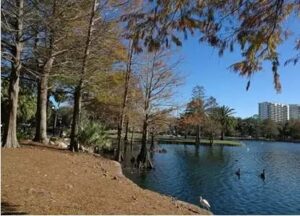
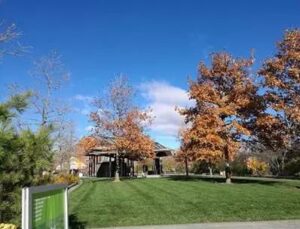
After three hundred years of rapid development of industrial civilization, global climate and natural resources have undergone drastic changes, and the human living environment and socioeconomic system are facing severe threats and challenges. With the increasing prominence of contradictions between population, resources, environment, and human development, people have begun to pay attention to the harmonious development between humans and nature, rethinking and understanding the objectives of urban construction and planning from multiple angles and deep levels. Against this backdrop, new urban development concepts such as “organic cities,” “ecological cities,” “low-carbon cities,” and “green cities” have emerged. From the early urban park movement to the construction of gardens and satellite cities to urban beautification campaigns to urban construction based on organic dispersion theory, the thinking of green spaces and the concept of green development have been integral. In 2005, mayors from more than 50 cities around the world signed the “Urban Environmental Accords – Green Cities Declaration” in San Francisco, and the green city movement has since flourished around the globe.
Green cities are the practical implementation of the concept of sustainable development in urban development and represent the awareness of ecological civilization and the concept of green development in urban growth. In recent years, major global cities such as New York, Chicago, London, Vancouver, Seoul, Nagoya, and Copenhagen have all set the strategic goal of building the greenest cities in the world, and have successively proposed green city construction targets or action plans (Figures 3 and 4). As a new concept in urban development, there is not yet a unified definition of “green city” in the theoretical realm. Generally speaking, it is an extension of the green economy within the urban domain, using urban space as a carrier, with energy, environment, transportation, construction, production, and consumption as elements, aiming for the sustainable development of resources, environment, and economy through rational spatial planning and scientific environmental governance. It builds a resource-saving, environmentally friendly, economically efficient, and conveniently accessible center for production and living, and represents a mode of urban construction and social development where pollution is fully controlled, resources are efficiently used, and humans coexist harmoniously with nature. As a dynamic concept, green cities manifest in diverse forms at various levels in different countries and cities, such as urban form, land use, transportation models, and urban economic and management means. Its connotation is also rich, touching on many aspects of urban development. Overall, green cities not only emphasize the internal structural relationships within the city, the relationship between the city and nature, the construction of the city’s ecological environment, visible greening, and other external visual images but also emphasize the relationships between people within the city, focusing on developing the city’s green civilization, green economy, green production, and green living, fully reflecting the people-oriented concept of sustainable development.
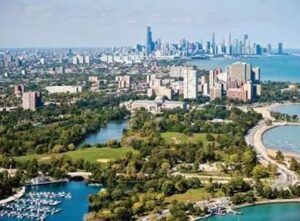
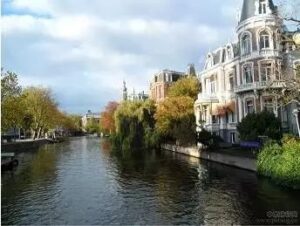
Looking at the theory and practice of green city construction at home and abroad, although the theoretical realm has not yet reached a consensus on the concept of green cities, there is general agreement on the strategies and methods of green city planning, which can be summarized in the following aspects.
1. Rational Urban Planning
Firstly, it involves scientifically delineating urban growth boundaries to control disorganized urban sprawl. Taking Portland, USA as an example, the municipal government clearly defined the urban growth boundary in the Metropolitan Area Growth Management Plan passed in 1979. All urban development must be within the urban growth boundary (a circumference of 200 miles [about 322 km], encompassing 227,400 acres [about 920 km²]) to meet the city’s land needs for the next 20 years. It emphasizes increasing the residential density of existing centers, permanently protecting farmland, forests, scenic areas, and other rural reserves beyond the urban growth boundary, and mandates a six-year review and modification of the urban growth boundary to adapt to land needs for population and employment over the next 20 years [1] (Figure 5). Secondly, different planning concepts are adopted in the construction of new and old urban areas. Many American cities respect the original texture of the city in the construction of historic urban areas, paying attention to both the maintenance of the original appearance of historic areas and the comfort of urban residents. Some cities have ancient trees so grand that roads are even diverted for them; some cities not only focus on maintaining the appearance of historic buildings but also delve into the historical and cultural essence of the buildings themselves. Through these measures, the ecological base and cultural environment of the city are fully protected, injecting new vitality into the city while retaining its own characteristics. In the planning of new urban areas, particular attention is paid to the convenience of residents’ daily travel and living. To facilitate residents’ daily commutes, every community is precisely designed during planning. Newly planned residential areas must not be too far from essential infrastructure such as kindergartens, bus stations, subway stations, and cultural and entertainment centers, and ensure the availability of shops, schools, and cultural, and entertainment facilities. The planning of new urban areas fully seeks residents’ opinions, values individual needs, focuses on creating traditional neighborhood relations, scientifically and rationally designs the ecological layout and functional units of residential areas, ensures personalized architectural decoration design, making the community more humane and travel more convenient.
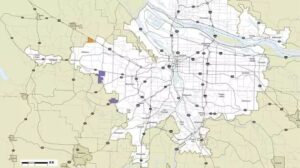
2. Good Land Use Planning to Promote Sustainable Use and Development of Land Resources
In the land use planning process in the United States, planners conduct scientific land suitability analysis based on different city soil, geology, hydrology, topography, and ecology, using technologies such as geographic information systems, remote sensing, and global positioning systems. The overall classification of land resources within the urban planning area is carried out, followed by rational land use decision-making. At the same time, based on the scientific evaluation of land resource use values, land development timing assessment is carried out to grasp the timing of parcel development and improve the efficiency of urban land use and development. For land that is ready for development, planning and development are carried out first; for land with potential value but not yet ready, wait until conditions are ripe before proceeding with planning. In green city planning, full consideration is given to the economical use of land, focusing on vertical development, attention to mixed-use functions of urban land, guiding low-carbon land use models, and increasing land use intensity at urban public transportation nodes.
3. Focus on Urban Energy Conservation and Emissions Reduction, Reducing Urban Carbon Emissions
The United States is committed to the development and utilization of renewable energy sources such as solar, wind, thermal, and geothermal energy in urban construction, and implements community energy planning, which has improved energy use efficiency. Los Angeles’ “Mayor’s Green Agenda” proposes the development of a “Clean Technology Corridor,” using high technology to transform traditional industries, develop hybrid vehicles, and widely use clean energy such as wind and solar energy, reducing the environmental pollution of economic activities (Figure 6). Since 2008, London’s new environmental regulations have covered households, businesses, power systems, and transportation. The government encourages residents to switch to energy-saving bulbs, transforming a quarter of the city’s power system, effectively reducing residents’ daily energy consumption. Toronto also encourages residents to adopt LED lighting systems to replace traditional bulbs and neon tubes to save electricity and reduce energy consumption.
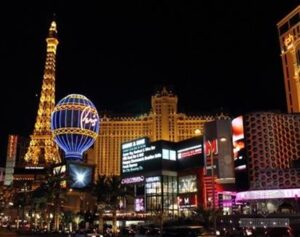
4. Encouraging Environmental Protection Transportation
Improve urban road network density, vigorously develop public transportation, build urban slow-moving systems, and reduce the rate of car travel. Portland has always focused on building a relatively balanced and organically connected metropolitan area transportation system. In addition to regional transportation that primarily uses private cars and public transportation, the transportation planning within the main city area reasonably controls motor vehicles, constructing continuous pedestrian walkways and bicycle networks, enhancing the attractiveness of public transportation. Light rail, buses, and bicycles have become the main means of transportation for residents of the main city area for daily travel (Figure 7). Meanwhile, Amsterdam is developing environmentally friendly transportation throughout the city, encouraging green travel, and implementing an electric vehicle popularization plan across the city to improve air quality.
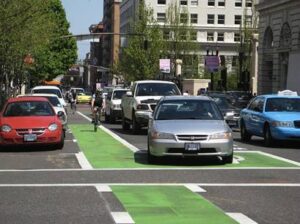
5. Promoting Energy-Efficient and Environmentally Friendly Buildings, Reducing the Environmental Load of Buildings
American residents’ houses are mostly made of wood, and the planning, construction, use, maintenance, remodeling, and demolition of residences all pursue the organic integration of architecture with nature. Such wooden houses are common in the United States, not only possessing architectural aesthetics but also minimizing the adverse impact of buildings on the urban ecological environment. As an internationally renowned green city, Chicago’s green roof project is known worldwide (Figure 8). To promote the rapid development of green roofs, the City of Chicago launched an incentive measure called the “Green Roof Grant Program” in 2005, assisting the entire Chicago area in establishing 20 green roof projects. During the hot summer, the more than 7 million square feet (about 650,000 m²) of green roofs in Chicago have reduced the urban heat island effect, not only purifying the air and beautifying the environment but also effectively reducing the heat absorption of buildings, lowering temperatures, and achieving comprehensive environmental protection effects.
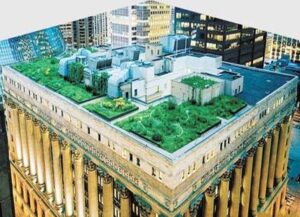
6. Strengthening Urban Ecological Protection, Focusing on Urban Green Space Planning and Construction
The United States places great importance on the protection of farmland and natural ecology in urban construction, which is fully reflected in land use planning. For example, the land use planning of San Jose stipulates that all construction projects must pass a land use planning review before obtaining a construction permit. The review first checks whether the construction breaks through the five green lines delineated on the planning map: the urban growth boundary, urban service boundary, hillside greenbelt, agricultural protection zone, and bay land conservation area. At the same time, many cities insist on planting native trees and shrubs, striving to avoid pesticide use, strengthening and leveraging the ecological and carbon sequestration functions of green spaces, vigorously promoting urban greenways, urban green wedges, and urban forest construction. There are more than 70 public green spaces in Chicago, including a giant greenbelt along Lake Michigan that is 500 to 1000 meters wide and about 30 km long. New York has set aside a nearly 5 km² Central Park in the heart of the city, despite the prime real estate of Manhattan (Figure 9). Paris implements a ring city greenbelt plan within 10 to 30 km from the city center, including attractions such as the Forest of Versailles and the Forest of Fontainebleau, linking urban green spaces through avenues and enacting short- and medium-term urban greening development plans. The city has increased its efforts in urban transformation, repairing historic buildings and bridges, and strengthening the construction and maintenance of urban parks and forests. A large number of urban greening belts have been opened, expanding urban green spaces, forming a reasonable urban green space system (Figure 10).
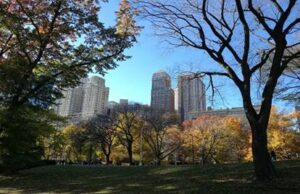
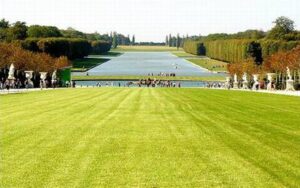
The ancient Greek philosopher Aristotle once said, “People gather in cities to live; they stay in cities to live better.” Throughout history, people have always had a unique love for green mountains, clear waters, and blue skies. In China, where smog prevails and air quality is severely declining, our longing for cities surrounded by forests and verdant grasslands is even more urgent. The reason why green cities abroad have developed so successfully, I believe, is that these cities have achieved “people-oriented, ecology first” in their greening construction, treating the city as a living organism, emphasizing a human-centered approach, building urban spaces at a comfortable scale, emphasizing the integration of neighborhood life and urban life, being close to the people, and reflecting public opinion. And this planning concept is precisely what many cities in China lack in development. Although China has already started the practice of green cities and garden cities, with some successful examples, there are still many problems overall. The construction of green cities is a huge composite artificial system that cannot be achieved overnight. It is not simply about planting flowers and trees in the city, or “filling in the gaps” to build a park, dig a stream, or create a green space, nor is it about “uniformity of a thousand cities and gardens,” ignoring the regional characteristics of different cities. The construction of green cities is a reconstruction of the urban ideal. It will profoundly affect the construction philosophy, spatial layout, and urban management style of urban planning, requiring us to calmly analyze, compare, and learn from others. In the construction of green cities in China, it is very necessary to learn from the successful experience of green cities abroad, especially their construction concept of “people-oriented, ecology first.” In terms of urban construction, starting from the safety, convenience, and enjoyment of residents’ lives, from large-scale facilities and public spaces to residential housing and supporting services, all are thoughtfully considered based on residents’ needs. In terms of transportation planning, we can fully adopt the principles of “pedestrian priority, public transportation priority, and street network priority,” fundamentally improve the function of urban roads, and create convenient transportation and green transportation systems, rather than blindly expanding roads, constructing roads, and increasing road area, only to fall into the vicious cycle of “the more roads are built, the wider they become, and yet traffic congestion remains the same.”
In terms of greening construction, while emphasizing green space planning, we should focus on the construction of large ecological green spaces, ring city green spaces, traffic green spaces, and residential green spaces, starting from the city’s style, regional terrain, and cultural characteristics, vigorously integrating ecosystems, improving forest coverage and greening rates, and increasing the accessibility of green spaces. For the maintenance and inheritance of historic villages, pavilions, temples, and ancestral halls, we can learn from some foreign cities, maintaining the original appearance of buildings in the spirit of “restoring the old as old,” focusing on the creation of the surrounding environment of historic landscapes, striving for the harmonious unity of culture, and the complementarity of the environment and the buildings themselves. At the same time, based on regional environment and cultural characteristics, we can dig deep into its historical and cultural veins, using museums, exhibition halls, chess clubs, folk cultural performances, cinemas, and other tools for introduction and publicity, increasing the interaction between visitors and the landscape, narrowing the distance between visitors and the landscape, allowing tourists to better understand the local history and culture during their visit, bringing the profound historical culture to life.
In terms of transportation planning, we can completely follow the foreign method of “pedestrian priority, public transportation priority, and street network priority,” fundamentally improve urban road functions, and create a convenient transportation and green transportation system, rather than blindly expanding roads, building roads, and increasing road area, which only leads to the paradox of “the more roads are built, the wider they become, and yet traffic congestion remains the same.”
“One water protects the fields with green, two mountains open the door to send green here,” this is our beautiful aspiration for green cities. Only by feeling the forms of different mountains and the pulsation of water can we achieve “seeing green when opening the window, stepping on green when leaving the house,” making the city green, bright, and vibrant!
Note: Pictures not sourced in the text are from the internet.
